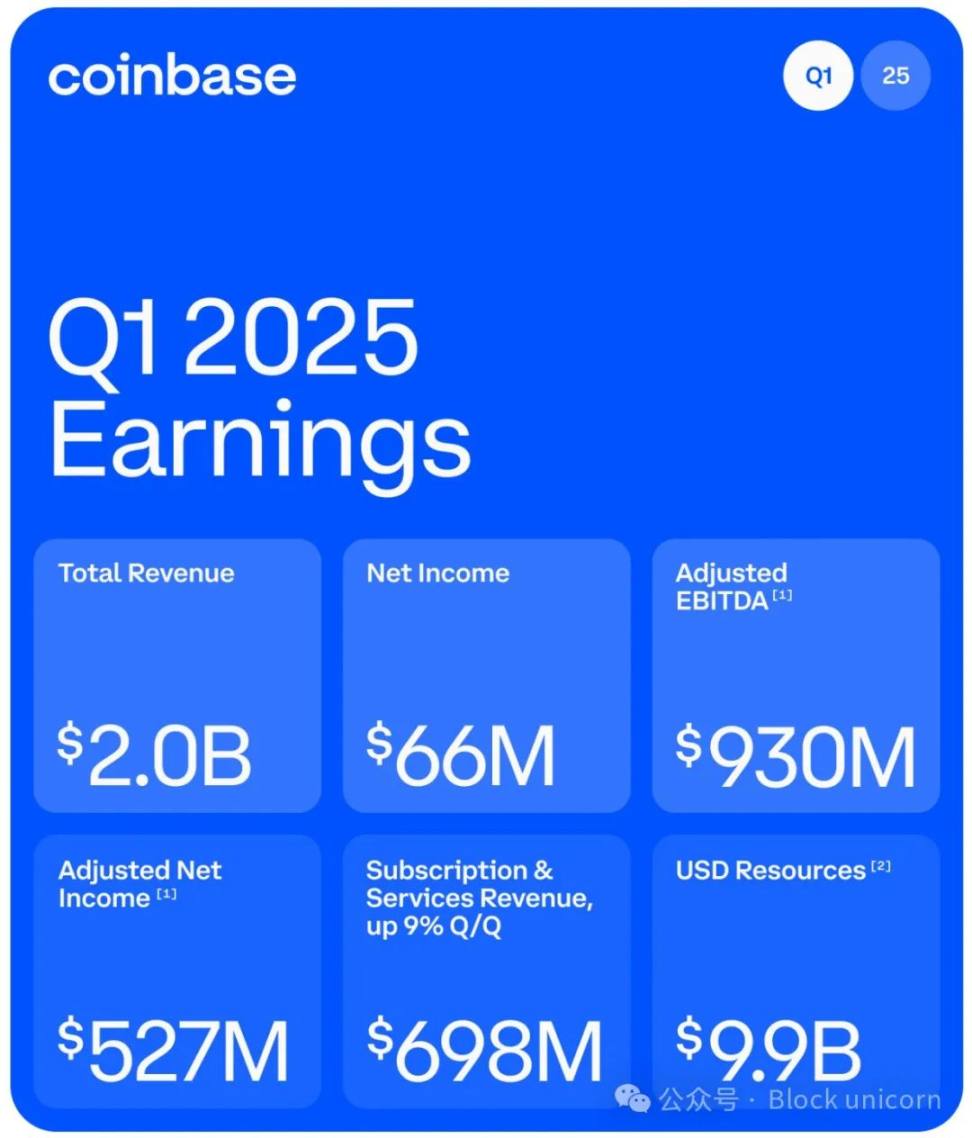Written by: TOKEN DISPATCH, THEJASWINI M A
Compiled by: Block unicorn
Preface
Within a week, Coinbase orchestrated the largest acquisition in cryptocurrency history, revealed they have been quietly hoarding Bitcoin, assisted in solving a murder case, and faced scrutiny for customer losses of $45 million—all while experiencing a decline in quarterly revenue.
Are these carefully calculated risks by a company targeting a trillion-dollar future, or a desperate strategy by an exchange in distress?
CEO Brian Armstrong seems to be building a grand vision far beyond an ordinary exchange—potentially transforming Coinbase from a retail trading platform to a financial infrastructure supporting the global cryptocurrency market.
But to understand what is truly happening, we need more than just headline news, but to examine the nature of this larger game.
Derivatives War
When Coinbase announced the acquisition of Deribit for $2.9 billion ($700 million in cash plus 11 million Coinbase shares), most analyses focused on the price.

This transaction immediately brought Coinbase:
Current $30 billion in open contracts
Over $1 trillion in trading volume last year
Dominant platform for Bitcoin and Ethereum options
Options trading is typically more resilient during market downturns, as traders use options to manage risks in both bull and bear markets.
Greg Tusar, Coinbase's Vice President of Institutional Products, noted: "We believe cryptocurrency options are about to experience significant expansion, similar to the equity options boom of the 1990s. This acquisition enables Coinbase to lead this growth."
Just a week earlier, competitor exchange Kraken completed a $1.5 billion acquisition of futures trading platform NinjaTrader. The similar moves by both exchanges indicate a widespread recognition that derivatives—not spot trading—will be the next major battleground.
By acquiring Deribit, which operates outside the US, Coinbase immediately gains access to a profitable derivatives trading market while potentially positioning itself for future regulatory developments that might open these markets in the US.
Jeff Park, Head of Alpha Strategies at Bitwise, commented: "This might be the most 'value' transaction I've seen in the cryptocurrency space," calling the acquisition "a feat for Coinbase".
Matt Hougan, Bitwise's Chief Investment Officer, went further, stating: "Coinbase will one day become a trillion-dollar company."
Considering Coinbase's current market capitalization of around $50 billion, this implies an ambitious twentyfold growth.

Profits, Safety, and Complex Signals
Despite the Deribit headline, Coinbase's quarterly report reveals a more complex picture of the company navigating through turbulence.
Total revenue decreased 10% quarter-on-quarter to $2 billion, falling short of industry expectations due to slowing market trading activity. More notably, net profit plummeted 95% from the fourth quarter's record $1.29 billion to $66 million in the first quarter.

This sharp decline primarily stems from a $596 million book loss due to the decline in cryptocurrency asset prices held by Coinbase. Trading revenue decreased 18.9% to $1.26 billion, with trading volume dropping 10.5% to $393 billion.
However, beneath these surface data, a more nuanced story emerges. Subscription and service revenue actually grew 8.9% to $698.1 million, with stablecoin revenue particularly outstanding. This growing revenue diversification indicates Coinbase is steadily reducing its dependence on volatile trading fees.
Meanwhile, Coinbase revealed purchasing $153 million worth of cryptocurrency assets, primarily Bitcoin, bringing its long-term investment portfolio to $1.3 billion—approximately 25% of its net cash.
CFO Alesia Haas emphasized during the earnings call: "It needs to be clear that we are an operating company. But we do invest alongside this industry."
Previously, there were reports that Coinbase had considered adopting a Bitcoin-centric capital management strategy similar to Michael Saylor's, but ultimately decided against it.
Armstrong told Bloomberg: "In the past 12 years, we have indeed considered several times whether to invest 80% of our balance sheet in cryptocurrency—especially Bitcoin. We made a well-considered choice about risks."
Unlike companies that explicitly tie their corporate identity to Bitcoin holdings, Coinbase has taken a more cautious approach, allocating operational profits back to cryptocurrency assets as a capital circulation strategy aligned with the industry, rather than a balance sheet transformation.
The Dark Side of Growth
As Coinbase expands its institutional products, it continues to face significant security challenges that threaten user trust.
On May 2nd, on-chain detective ZachXBT discovered that Coinbase users lost approximately $45 million through social engineering scams in just seven days. More shockingly, he claimed that Coinbase users have lost funds in similar scams reaching "nine figures" in the past few months, describing this as a problem unique to Coinbase among major exchanges.

These claims suggest that Coinbase users might be losing up to $330 million annually to social engineering scams, reflecting sophisticated attack strategies against cryptocurrency holders.
However, Coinbase has also used its security expertise to assist law enforcement in solving major crimes. Chief Legal Officer Paul Grewal revealed on May 6th that the company's blockchain forensics team played a crucial role in a criminal investigation in New York City that ultimately led to convictions in multiple murder cases.
The case involved a series of violent robberies where victims—typically from the LGBTQ+ community—were drugged outside Manhattan bars and clubs, with their phones stolen and financial and cryptocurrency accounts emptied. Several victims were found dead from fentanyl-laced substances, with over $250,000 stolen across multiple platforms, including Coinbase.
Grewal explained: "Our blockchain analysis linked multiple wallets to the same criminal gang, helping recover evidence in traditional financial and cryptocurrency channels, and supported convictions on 24 charges, including second-degree murder." He added: "This case demonstrates that cryptocurrency is not the risk—it provides an evidentiary chain to bring violent criminals to justice."
This duality—being both a target for scammers and a valuable tool for law enforcement—highlights the complex position Coinbase occupies as it expands its operations.
Institutional Game
Synthesizing these developments, Coinbase's strategic landscape becomes clearer.
The Deribit acquisition is the latest in a series of strategic acquisitions that systematically expand its institutional capabilities:
2019 acquisition of Xapo, facilitating Coinbase Custody
2020 acquisition of Tagomi, facilitating Coinbase Prime
2022 acquisition of FairX, facilitating Coinbase Derivatives Exchange
2023 acquisition of One River Digital, facilitating Coinbase Asset Management
2025 acquisition of Deribit, making Coinbase a global leader in crypto derivatives platforms
Each acquisition fills a specific gap in Coinbase's institutional services, gradually building a system that could become a comprehensive cryptocurrency financial infrastructure.
This institutional infrastructure advancement aligns with reports that Coinbase is considering applying for a US banking license, potentially following in the footsteps of Circle and BitGo, bridging the gap between cryptocurrency and traditional finance through formal banking credentials.
The goal appears to be creating a platform that allows professional traders to access spot, futures, perpetual futures, and options trading in a seamless, capital-efficient environment. This would transform Coinbase from merely a retail entry point for cryptocurrency to a pillar of global institutional crypto trading.
Meanwhile, Coinbase's cautious approach to holding cryptocurrencies on its balance sheet indicates the company is balancing its crypto-native identity with its responsibilities as a publicly listed company.
Our Perspective
In previous crypto cycles, when crypto enthusiasts discussed "institutional adoption", they typically envisioned BlackRock and Goldman Sachs purchasing Bitcoin for their balance sheets or offering crypto products to clients. While the emergence of Bitcoin ETFs partially realized this vision, a different type of institutional infrastructure is quietly taking shape.
Coinbase's acquisition of Deribit marks a key moment in this evolution. Traditional institutions have not fully embraced cryptocurrency; instead, crypto-native companies are transforming into institutions.
Reports suggest Coinbase is actively considering applying for a US banking license, consolidating its transformation from an outsider to an insider—an astonishing reversal for a company that just years ago could not even maintain basic banking relationships for many of its executives.
This creates an interesting dynamic. Coinbase was initially an exchange for retail users, simplifying Bitcoin purchases for ordinary users. Today, it is metamorphosing into an entity similar to traditional financial giants—with prime brokerage, custody, asset management, and now advanced derivatives trading.
However, unlike traditional financial institutions, Coinbase retains its crypto-native genes. It holds Bitcoin on its balance sheet, provides blockchain forensics for law enforcement, and remains committed to cryptocurrency's potential to reshape finance.
This hybrid identity could become Coinbase's greatest strength or most notable weakness. Traditional financial companies are constrained by decades of regulation, which both limits and protects them. Crypto-native institutions are creating new models with few precedents and limited safeguards against unknown risks.
The future of cryptocurrency may depend on whether companies like Coinbase can successfully bridge this gap—developing institutional-grade security and compliance while maintaining cryptocurrency's innovative potential. Their success or failure will determine whether cryptocurrency can fulfill its promise of financial transformation or remain permanently on the margins.







